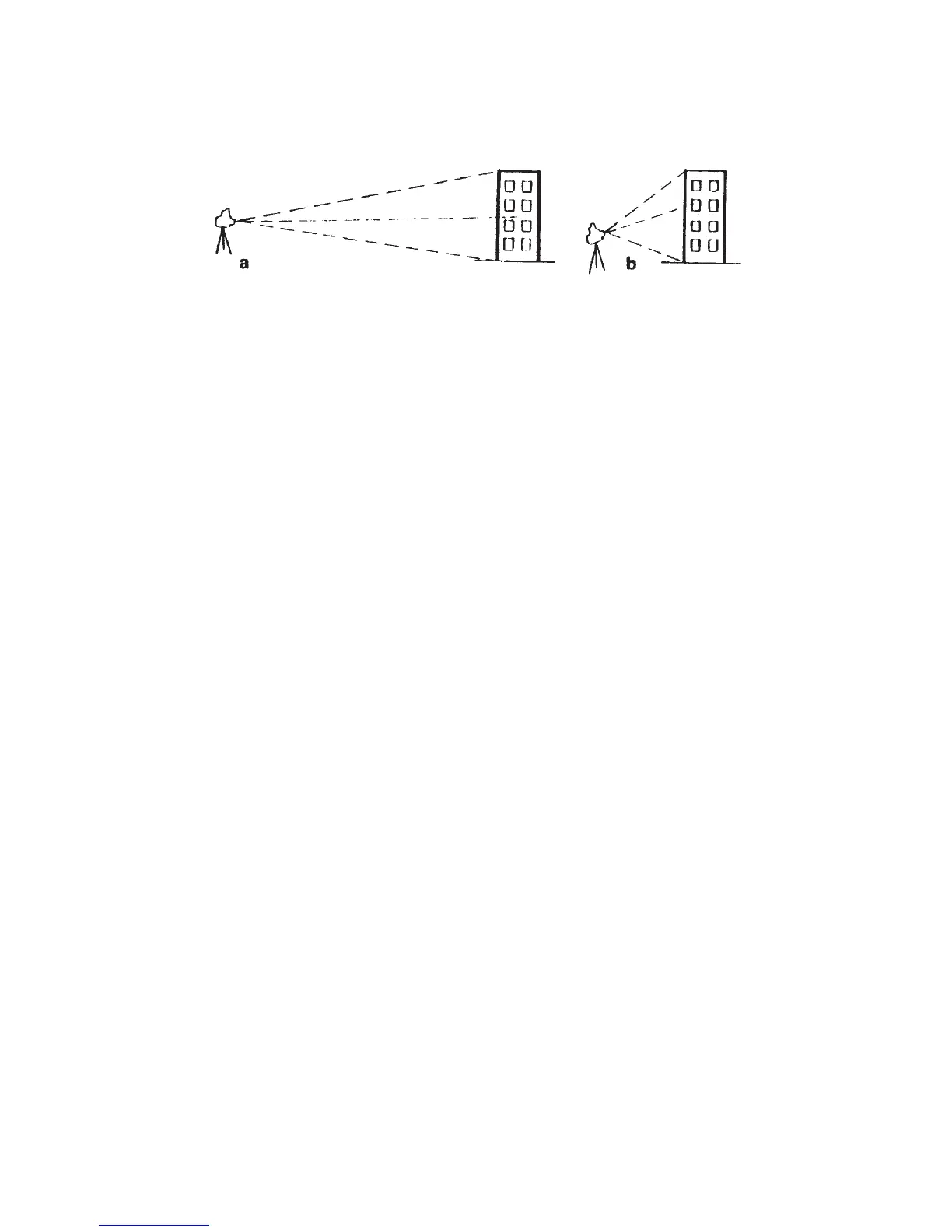268 THE HASSELBLAD MANUAL
EFFECTIVE FISH-EYE IMAGES.
Everything you photograph with a 30 mm Distagon fi sh-eye lens on a 503 or other V system
camera looks different from the way we see the world. This occurs because of its 180-degree
diagonal angle of view, which is completely out of proportion to the 112-degree horizontal or
vertical angle of view that would be normal for a 30 mm lens on the 2¼ square fi lm format
(see Figure 14-1). Be aware that the angle of view mentioned above applies only when record-
ing the image on the 2¼ square fi lm format. On the somewhat smaller 36.7 49 mm sensor,
the fi sh-eye effect can still be striking but is greatly reduced on smaller sensor sizes.
The curved lines on the outside areas of the image create this visual difference and are
the fi rst good reason for considering this lens for some of your images. The effect can be
very striking, but can also become objectionable and a distraction in many compositions. You
must be careful how you compose the scene; evaluate the entire image area carefully in the
viewfi nder.
The curvature in the horizontal and vertical lines becomes more exaggerated further
away from the center of the image. A horizon line composed close to the center of the image
will have just a slight curvature and may look more like a mistake. The same line composed
close to the top or bottom of the image will be recorded with a strong curvature and is more
likely to look like an artistic component of the image. A tree with a curved tree trunk on one
side of the image may look strange, perhaps because the viewer may not know whether the
tree looked that way or was just recorded in this curved fashion. Composed with a second
and similar tree in the same location but on the other side, the image may look like a beauti-
fully framed composition.
Fish-Eye Images Without the Fish-Eye Look
While fi sh-eye images are best recognized by the curved lines, images produced with the
full-frame Distagon lens need not have the typical fi sh-eye look. Straight horizontal, vertical,
and diagonal lines that intersect the center of the fi eld are recorded as straight lines. You can
avoid, or at least reduce, the fi sh-eye look by composing the image so that important verti-
cal, horizontal, and diagonal lines cross the center of the fi eld. A horizon composed in the
center is perfectly straight. A big redwood tree photographed with a tilted camera so its tree
trunk runs diagonally from a corner to the center is perfectly straight (Figure 14-32). Circular
Figure 14-30 Photographing buildings from different distances. Photographing a building from
a longer distance with a longer lens (a) may produce straight verticals since it reduces or
eliminates the need for tilting the camera, which is necessary from a shorter distance with a
shorter lens (b).

